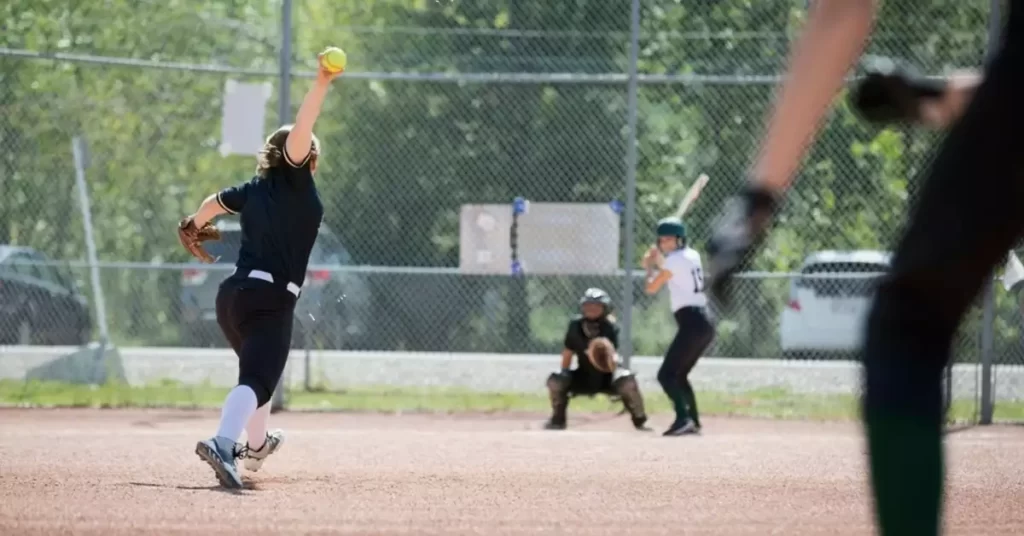Throwing a softball with precision and speed is an essential skill in the game. Mastering this art not only improves your overall performance but also sets you apart from the competition. Many players struggle to achieve the perfect throw, but it’s not as elusive as it may seem.
The secret to a flawless softball throw lies in the correct technique, proper body positioning, and consistent practice. This article breaks down the essential steps and offers valuable tips to help you refine your throwing skills and impress your teammates.
Dive into the world of softball mastery as we reveal the techniques used by the pros. Learn how to transform your throw and become a vital asset to your team. The perfect pitch is within your grasp, and with the right guidance, you’ll conquer the field in no time.
Understanding the Basics of Softball Throwing
Before diving into the techniques, it’s essential to grasp the fundamentals of softball throwing. The key elements include the grip, stance, throwing motion, and follow-through. Each component plays a vital role in determining the power, accuracy, and consistency of your throw.
Choosing the Right Softball Grip
The grip is where it all begins. A proper grip ensures control and accuracy while minimizing the risk of injury. Here are some tips for choosing the right grip:
- Fingers on the seams: Place your index and middle fingers along the seams of the softball, with your thumb underneath for support.
- Avoid choking: Don’t hold the ball too tightly, as it may result in a weaker throw. Keep your grip relaxed and comfortable.
- Wrist position: Your wrist should be in a neutral position, neither bent nor extended, allowing for a smooth release of the ball.
The Importance of Proper Stance
Your stance serves as the foundation for your throw. A balanced, stable stance helps generate power and maintain accuracy. Here’s how to achieve the optimal stance:
- Feet shoulder-width apart: Stand with your feet approximately shoulder-width apart for stability.
- Slight bend in the knees: Keep your knees slightly bent to maintain balance and absorb any shocks during the throw.
- Weight distribution: Distribute your weight evenly between both feet, ready to shift it as needed throughout the throwing motion.

Perfecting Your Throwing Motion
A fluid, efficient throwing motion is crucial for both power and accuracy. Follow these steps to perfect your motion:
- Step with your lead foot: As you begin your throw, step towards your target with your lead foot (the foot opposite your throwing arm). This helps generate momentum for your throw.
- Rotate your hips: Rotate your hips to face your target, transferring your weight from your back foot to your front foot.
- Extend your throwing arm: As you rotate your hips, extend your throwing arm, releasing the ball with a flick of your wrist.
- Follow through: Continue your throwing motion, allowing your arm to decelerate naturally.
Building Accuracy and Consistency
Accuracy and consistency are crucial for any successful throw. Here are some tips to help you improve these aspects of your game:
- Visualize your target: Keep your eyes focused on your target throughout the entire throwing motion.
- Practice regularly: The more you practice, the better your muscle memory will become, leading to increased accuracy and consistency.
- Maintain a consistent release point: Focus on releasing the ball at the same point in your throwing motion each time to develop a reliable throw.
- Adjust your aim: If you notice a consistent pattern of missing your target, make small adjustments to your aim until you achieve the desired result.
Improving Your Arm Strength
Stronger arm muscles contribute to a more powerful and controlled throw. Incorporate the following exercises into your training routine to improve arm strength:
- Resistance band exercises: Use resistance bands to perform exercises such as external rotations, internal rotations, and shoulder presses.
- Weight training: Incorporate dumbbell exercises like bicep curls, tricep extensions, and lateral raises into your workouts.
- Bodyweight exercises: Push-ups, pull-ups, and dips are all effective ways to build arm strength without equipment.
- Long toss: Increase your throwing distance gradually to build arm strength and endurance.

Developing Quick Reflexes
Quick reflexes can make all the difference in the field, especially when responding to fast-moving balls. Enhance your reflexes with these tips:
- Reaction drills: Practice drills that require quick reactions, such as fielding ground balls or catching line drives.
- Agility exercises: Incorporate agility training into your routine, including ladder drills, cone drills, and plyometric exercises.
- Visual tracking: Improve your ability to track moving objects by watching videos or participating in sports that require tracking, such as tennis or table tennis.
Throwing Different Types of Softball Pitches
A diverse repertoire of pitches keeps opponents guessing and gives you more options on the mound. Some common types of softball pitches include:
- Fastball: A high-velocity, straight pitch that relies on speed to overpower batters.
- Changeup: A slower pitch with a similar arm motion to a fastball, designed to disrupt a batter’s timing.
- Curveball: A pitch that breaks away from the batter, making it difficult to hit.
- Drop Ball: A pitch that appears to be a fastball but drops sharply as it approaches the plate, forcing batters to swing over the top.
Common Mistakes to Avoid
To ensure your throws are as effective as possible, be aware of these common mistakes and work to correct them:
- Rushing the throw: Avoid rushing through your throwing motion, as it can lead to poor mechanics and reduced accuracy.
- Over-rotating: Excessive rotation of the hips or shoulders can throw off your aim and reduce the effectiveness of your throw.
- Incomplete follow-through: Failing to follow through on your throw can limit its power and accuracy.
Practice Makes Perfect
The key to improving your softball throw is consistent practice. Dedicate time to work on each aspect of your throw, and don’t be afraid to seek guidance from coaches, teammates, or instructional videos.
Frequently Asked Questions
1. How can I increase the speed of my softball throw?
To increase the speed of your throw, focus on improving your arm strength, refining your throwing mechanics, and practicing consistently.
2. What is the best grip for throwing a softball?
The best grip for throwing a softball involves placing your index and middle fingers along the seams, with your thumb underneath for support. Maintain a relaxed, comfortable grip to ensure smooth ball release.
3. How can I improve my throwing accuracy in softball?
To improve your throwing accuracy, practice regularly to develop muscle memory, maintain a consistent release point, focus on your target, and make small adjustments to your aim as needed.
Final Verdict
In the realm of softball, a powerful and accurate throw can make a world of difference. It’s time to take your skills to the next level and become an indispensable player on your team. With the right approach and determination, you will see significant improvements in your throwing abilities.
Remember, the journey to softball excellence is a continuous process that demands commitment and practice. As you apply the techniques and tips outlined in this article, watch your throws soar to new heights. Embrace the challenge, and enjoy the rewards that come with being a skilled softball player.
